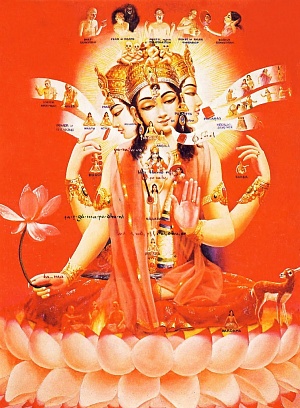News
-
 Pranayama workshop, Mar 1-7
Pranayama workshop, Mar 1-7
-
 21-day Pranayama challenge
21-day Pranayama challenge
-
 Nāda meditation workshop, January 8-12
Nāda meditation workshop, January 8-12
-
 April 3, Navaratri with Yogi Matsyendranath Maharaj, Australia, Queensland
April 3, Navaratri with Yogi Matsyendranath Maharaj, Australia, Queensland
-
 March 17, 2020. Purifiying Pranayama With Yogi Matsyendra Nath
March 17, 2020. Purifiying Pranayama With Yogi Matsyendra Nath
-
 November 2019, Tantra Workshop Series in Argentina
November 2019, Tantra Workshop Series in Argentina
-
 Workshop in Gualeguaychu
Workshop in Gualeguaychu
-
 17-18 November 2018, Yogi Matsyendranath in Źarate (Argentina)
17-18 November 2018, Yogi Matsyendranath in Źarate (Argentina)
-
 15-16 November 2018, Yogi Matsyendranath visit to Uruguay
15-16 November 2018, Yogi Matsyendranath visit to Uruguay
-
 12 Nov 2018, Lecture at USAL (Salvador University)
12 Nov 2018, Lecture at USAL (Salvador University)
-
 10-11 November 2018, Workshops in Quilmes and La Plata (Argentina)
10-11 November 2018, Workshops in Quilmes and La Plata (Argentina)
-
 8 November 2018, Open conference in Necochea (Argentina)
8 November 2018, Open conference in Necochea (Argentina)
-
 2,3,4 November 2018 - Participating in XVI Retreat International of Yoga and Meditation
2,3,4 November 2018 - Participating in XVI Retreat International of Yoga and Meditation
-
 Programme in Québec (Canada) 13-16 June
Programme in Québec (Canada) 13-16 June
-
 Melbourne Book Launch
Melbourne Book Launch
-
 4-years Summer Program
4-years Summer Program
-
 Biography of a Russian Yogi
Biography of a Russian Yogi
-
 November 2017, Visit of Yogi Matsyendranath to Argentina
November 2017, Visit of Yogi Matsyendranath to Argentina
-
 Satsangs of Yogi Matsyendranatha Maharaj in Berlin
Satsangs of Yogi Matsyendranatha Maharaj in Berlin
-
 Seminars and trainings in June-July 2015 (France)
Seminars and trainings in June-July 2015 (France)
Brahma
Brahma
 ब्रह्म, brahma
ब्रह्म, brahma
Supreme Deity, Creator
The first Deity of Hindu trinity (trimurti), responsible for creation of the world.
It is described that Brahma's skin color is reddish and he is dressed in red clothes. Brahma has four heads, four faces and four arms. It is said that each of his four heads continuously recites one of the four Vedas. Brahma is often represented with a white beard (especially in Northern India), which symbolizes the eternal nature of his existence. Unlike most other Hindu deities, Brahma doesn’t hold any weapons in his hands. In one of his hands he holds a scepter in the shape of a ladle or a large spoon, which is associated with spilling of ghee on the sacred fire of Vedic sacrifices and symbolizes that Brahma is the Lord of yajnas. In the other of his hands he holds kamandala, akshamala, and books. Kamandala is a vessel with water made of metal or even from a coconut shell. The water in this vessel symbolizes primordial, all-absorbing ether, from which first elements of creation appeared. Akshamala is a prayer beads, which he uses to count universal time. Books are Vedas, but sometimes he holds a lotus flower.
Brahma's vehicle, or vahana is divine swan. The swan is venerated in Indian culture for its special quality called nira-kashira-viveka, or the ability to separate milk from a mixture of milk and water. This ability of the swan indicates that an individual should be able to separate the good from the bad, accepting what has spiritual value and rejecting what doesn’t have it.
In the last Vedic period, Brahma was identified with Prajapati, the creator of all beings. Most common other Brahma epithets-hypostases are: Pitamaha (Great Patriarch), Kamalasana (Sitting on the Lotus), Hiranyagarbha (Born from Golden Egg), Savitri-pathi (Savitri's Spouse), Tvashtri (Creator), Dhatri (Installer), Vidhatri (Distributor), Loka-Guru (Mentor of the World), Parameshthin (The Highest).
In Nath Tradition, it is believed that Brahma, after his legendary dispute with Vishnu about who of them was more powerful, met Gorakshanath, who showed him the yogic path. Thus Brahma acquired a yogic shape (yoga-rupa) and became known as Satyanath.

Although Brahma's prayers are part of almost all Hindu rituals, there are very few temples dedicated to him. The most significant and sacred one is considered to be the temple of Brahma in Pushkar, Rajasthan. Every year, on the full moon of Kartika lunar month (October — November), a major religious festival honoring Brahma is held there. Thousands of pilgrims come on this day to take ablution in the sacred Pushkar Lake adjoining the temple.

